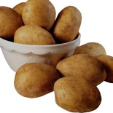Crystal Heart ukulele
-
Similar Content
-
- 0 replies
- 1,072 views
-
Which Alicorn Princess Do You Serve? 1 2
By Night Sky,
- my little pony: friendship is magic
- princess cadance
- (and 3 more)
- 38 replies
- 6,258 views
-
- 3 replies
- 758 views
-
My Little Pony: Lost Stories of Equestria (collection includes 'Rise of Cadance')
By Otaku-sempai,
- collection
- comic
- (and 2 more)
- 1 reply
- 2,163 views
-
MLP G6 turns out to be a show about Shining Armor how would you feel about?
By WickedGames,
- g4
- my little pony: friendship is magic
- (and 1 more)
- 7 replies
- 892 views
-
-
Recently Browsing 0 members
- No registered users viewing this page.



.thumb.png.6c71be719dfe49e56452731b456fc53f.png)




Recommended Posts
Create an account or sign in to comment
You need to be a member in order to leave a comment
Create an account
Sign up for a new account in our community. It's easy!
Join the herd!Sign in
Already have an account? Sign in here.
Sign In Now